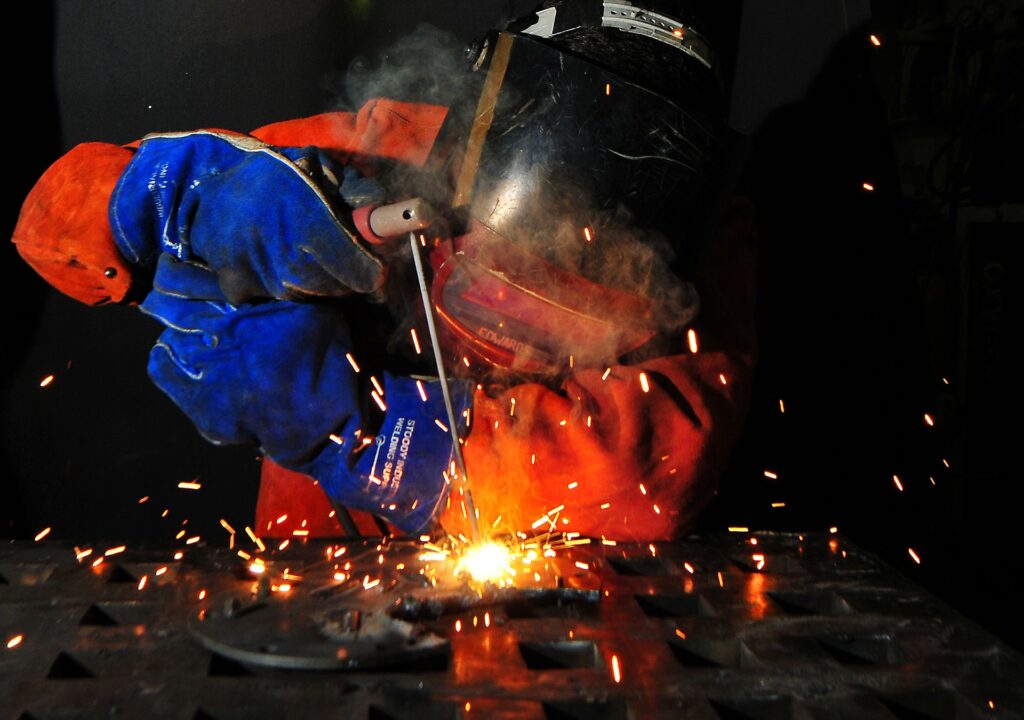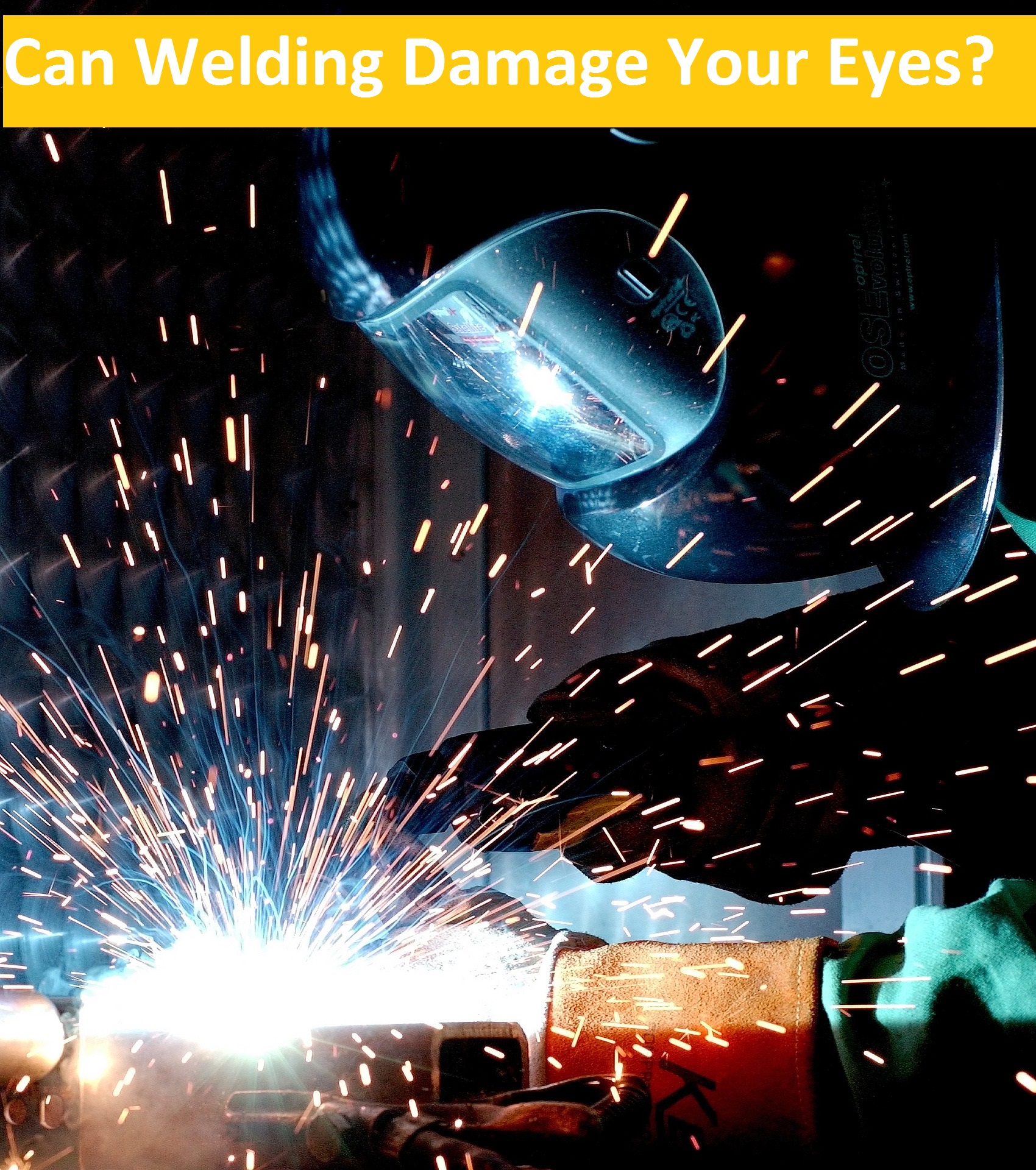Introduction of Can Welding Damage Your Eyes?
Welding can affect your eyes in a bad way if done without wearing proper safety equipment. Fumes and flying metal sparks caused during welding excessively damage your eyesight and even lead to cataracts. Welding produces UV and IR radiations, and long-term exposure to these radiations seems to impact your eye health negatively.
As long as you have worn proper and advanced safety gear, none of the UV and IR radiations, fumes, and flying metal sparks will damage your eyes. Below you can see further details regarding how far welding can harm your eyes:
Does welding damage your eyes?

Yes, welding hurts your eyes. Exposure to infrared light, UV and IR radiations, and even constant contact with metal sparks and fumes hurt the welder’s eyes. These radiations and sparks excessively heat the eye’s lens and ultimately lead to cataracts.
Furthermore, the light produced during welding seems very bright and tends to overwhelm and harm the iris’s ability. Constant interaction with the visible light during welding limits the brightness reaching the retina. Welders have complained of getting eye burns. This generally happens when you weld at night and remain exposed to direct and indirect flashes.
Eye problems associated with welding
We have listed a few of the eye problems that you might encounter due to welding:
Photo keratitis
In this condition, your eyes burn heavily, and this medical problem remains commonly spotted among welders. You can call it sunburn of the cornea. Though the damage brought by this condition seems not permanent, the pain is tough to tolerate. Thus, UV rays burn corneas and lead to various short-term eye problems.
Pterygium
Pterygium is another eye problem in which welders are heavily targeted. Unprotected contact with UV and IR rays causes Pterygium. At times, this eye problem is given the name of “surfer’s eye.” You will witness an abnormal growth right there on the eye’s surface and near the nose corner.
Furthermore, the affected person notices a lot of swelling and irritation. You will encounter other corneal problems, and your vision will be negatively affected. It is recommended to go for surgery as soon as possible.
Cataracts
Cataracts cause vision loss, and people over 40, especially welders, have been the common target of this condition. In this condition, progressive clouding appears on the eyes’ lenses. Treating this condition on time remains a must. And if untreated, it will lead to reversible blindness. According to experts, many cataract cases happen due to prolonged contact with UV and IR radiation.
Age-Related Macular Degeneration
AMD, abbreviated as Age-related macular, is a vision loss problem that welders usually get! High UV exposure remains strongly associated with AMD. Most importantly, UV radiation injects photooxidative stress into the retina, leading to AMD problems. Early detection and on-time treatment can help you slow down vision loss.
Arc eye
Exposure to UV radiation leads to an injury to the eye surface and mucous membrane, and this condition is called “arc eye” or “arc flash.” The affected person notices an inflammation on the front eye part of the mucous membrane. You feel immense pain and pressure in the eyes. The pain might become more intense if this problem remains left untreated. Arc eye can lead to tearing as well as reddening of the eye membranes.
What kind of welding activities damage your eyes?
Welding involves a lot of processes, activities, and techniques. Your eyes remain at the highest risk of getting harmed when welding. Below you can see which welding activities damage eyes more:
- When grinding, your eyes are at the biggest risk of impairment and destruction. You must be very careful when using portable angle grinders as well as table grinders.
- Plasma cutting, torch cutting, bandsaw cutting, or chopping saw should be performed with utmost care. If done with negligence, your eyes will be the first to get hurt.
- Buffing/cleaning using a stiff wire wheel and sanding using a flap wheel must be handled with maximum care. If handled with carelessness, you might harm your face and eyes.
- Furthermore, chipping and hammering slag brings the eyes at the biggest risk.
How to prevent eye injuries during welding?
Wearing proper face and eye protection is a must because you never know if any fume or metal spark gets to enter your eyes while you rotate, spin, saw, or melt the steel.
Experts have come up with these accurate figures that many cases related to impaired vision, loss of eyesight, and eye burns occur because welders do not wear proper safety equipment.
Among the most important safety gear, this generally includes a welding apron or jacket, welding sleeves, gloves, and welding hood/helmet. It is possible to prevent 90 percent of eye injuries on a condition if the person wears proper safety eyewear. Remember that a minor injury to the cornea can become a life-long issue and at the same time, severely painful.
Skin hazards linked with welding
Apart from causing many eye problems, some skin hazards are strongly linked with welding. Welding arcs, fumes, and flames emit ultraviolet and infrared radiations, leading to skin burns.
UV radiation on the welding arc excessively burns the unprotected skin, which is why it is always advised to cover your whole body, including your face, eyes, and hands, before you weld a metal. Even more, prolonged UV radiation exposure might target you with skin cancer problems.
Conclusion
Thus, you must always remember that welding does bring harm to the eyes if you do not cover them with proper eye safety equipment. When welding, our eyes, face, and even the whole body get exposed to UV and IR radiations, fumes, arcs, and metal sparks.
Unprotected UV/IR contact damage the eye lens, produce cataracts, leads to impaired vision, or might lose your eyesight for the rest of your life. Stay tuned with us, and more precautionary measures to protect your eyes while welding will be shared with you.
